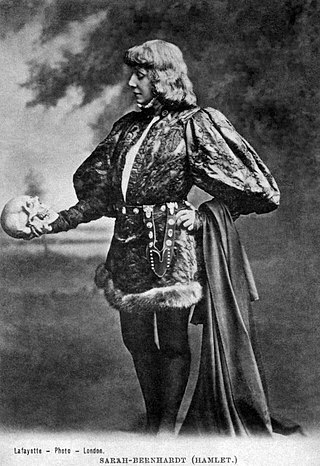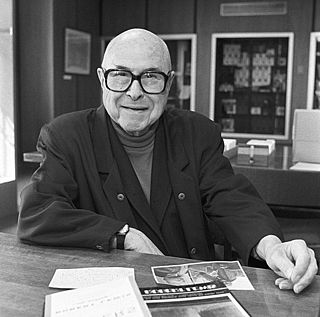Related Research Articles

Acting is an activity in which a story is told by means of its enactment by an actor who adopts a character—in theatre, television, film, radio, or any other medium that makes use of the mimetic mode.

Konstantin Sergeyevich Stanislavski was a seminal Soviet Russian theatre practitioner. He was widely recognized as an outstanding character actor, and the many productions that he directed garnered him a reputation as one of the leading theatre directors of his generation. His principal fame and influence, however, rests on his "system" of actor training, preparation, and rehearsal technique.

Method acting, known as the Method, is a range of rehearsal techniques, as formulated by a number of different theatre practitioners, that seeks to encourage sincere and expressive performances through identifying with, understanding, and experiencing a character's inner motivation and emotions. These techniques are built on Stanislavski's system, developed by the Russian actor and director Konstantin Stanislavski and captured in his books An Actor Prepares, Building a Character, and Creating a Role.

The Group Theatre was a theater collective based in New York City and formed in 1931 by Harold Clurman, Cheryl Crawford and Lee Strasberg. It was intended as a base for the kind of theatre they and their colleagues believed in—a forceful, naturalistic and highly disciplined artistry. They were pioneers of what would become an "American acting technique", derived from the teachings of Konstantin Stanislavski, but pushed beyond them as well. The company included actors, directors, playwrights, and producers. The name "Group" came from the idea of the actors as a pure ensemble; a reference to the company as "our group" led them to "accept the inevitable and call their company The Group Theatre."

Stanislavski's system is a systematic approach to training actors that the Russian theatre practitioner Konstantin Stanislavski developed in the first half of the twentieth century. His system cultivates what he calls the "art of experiencing". It mobilises the actor's conscious thought and will in order to activate other, less-controllable psychological processes—such as emotional experience and subconscious behaviour—sympathetically and indirectly. In rehearsal, the actor searches for inner motives to justify action and the definition of what the character seeks to achieve at any given moment.

Lee Strasberg was an American theatre director, actor and acting teacher. He co-founded, with theatre directors Harold Clurman and Cheryl Crawford, the Group Theatre in 1931, which was hailed as "America's first true theatrical collective". In 1951, he became director of the nonprofit Actors Studio in New York City, considered "the nation's most prestigious acting school," and, in 1966, he was involved in the creation of Actors Studio West in Los Angeles.

SanfordMeisner was an American actor and acting teacher who developed an approach to acting instruction that is now known as the Meisner technique. While Meisner was exposed to method acting at the Group Theatre, his approach differed markedly in that he completely abandoned the use of affective memory, a distinct characteristic of method acting. Meisner maintained an emphasis on "the reality of doing", which was the foundation of his approach.

Stella Adler was an American actress and acting teacher.

Harold Edgar Clurman was an American theatre director and drama critic. In 2003, he was named one of the most influential figures in U.S. theater by PBS. He was one of the three founders of New York City's Group Theatre (1931–1941). He directed more than 40 plays in his career and, during the 1950s, was nominated for a Tony Award as director for several productions. In addition to his directing career, he was drama critic for The New Republic (1948–1952) and The Nation (1953–1980), helping shape American theater by writing about it. Clurman wrote seven books about the theatre, including his memoir The Fervent Years: The Group Theatre and the Thirties (1961).
Practical Aesthetics is an action-based acting technique originally conceived by David Mamet and William H. Macy, based on the teachings of Aristotle, Stanislavsky, Sanford Meisner, Joseph Campbell, and the Stoic philosopher Epictetus.
The Meisner technique is an approach to acting developed by American theatre practitioner Sanford Meisner.

Robert Lewis was an American actor, director, teacher, author and founder of the influential Actors Studio in New York in 1947.
Affective memory was an early element of Stanislavski's 'system'. It was adopted by Lee Strasberg and made a central part of his own acting technique 'The Method' more broadly referred to as method acting. Affective memory requires actors to call on the memory of details from a similar situation and substitute those feelings for those of their characters. Stanislavski believed actors needed to take emotion and personality to the stage and call upon it when playing their character. He also explored the use of objectives, actioning, and empathizing with the character.

My Life in Art is the autobiography of the Russian actor and theatre director Konstantin Stanislavski. It was first commissioned while Stanislavski was in the United States on tour with the Moscow Art Theatre, and was first published in Boston, Massachusetts in English in 1924. It was later revised and published in a Russian-language edition in Moscow under the title Моя жизнь в искусстве. It is divided into 4 sections entitled: 1-Artistic Childhood, 2-Artistic Youth, 3-Artistic Adolescence and 4-Artistic Adulthood.
The following outline is provided as an overview of and topical guide to acting:

An actor or actress is a person who portrays a character in a production. The actor performs "in the flesh" in the traditional medium of the theatre or in modern media such as film, radio, and television. The analogous Greek term is ὑποκριτής (hupokritḗs), literally "one who answers". The actor's interpretation of a role—the art of acting—pertains to the role played, whether based on a real person or fictional character. This can also be considered an "actor's role", which was called this due to scrolls being used in the theaters. Interpretation occurs even when the actor is "playing themselves", as in some forms of experimental performance art.
The Michael Howard Studios is an acting studio for the performing arts located in at 152 West 25th Street in Chelsea, Manhattan, New York City; the studio was founded in 1953 by actor/director Michael Howard.
Psycho-physical Awareness is a popular acting technique used in many schools and universities in the U.S. and Europe. This technique works on the relationship between the mind and the body and at developing an actor’s conscious awareness. In other words, recognizing the resulting sensory and mental states in reaction to physical stimuli. The pioneer of this technique is Konstantin Stanislavski who sought to overcome the divisions between “mind from body, knowledge from feeling, analysis from action” through psychophysical training or the method of physical action, but it was Michael Chekhov who further developed an original and dependable method of what we now know to be psycho-physical awareness.
Classical acting is a traditional type of acting which is centered around the external behavior of the performer. Classical acting differs from newer styles of acting, as it is developed around the ideas of the actor themselves which includes their expression of the body, voice, imagination, personalizing, improvisation, external stimuli, and script analysis. This further places emphasis on an actor's psychological relationship with their part as they 'live' their role in order to create realism.
An acting coach or drama coach is a teacher who trains performers – typically film, television, theatre, and musical theatre actors – and gives them advice and mentoring to enable them to improve their acting and dramatic performances, prepare for auditions and prepare better for roles.
References
- ↑ "What It Means To Be 'Method'". Tribeca Film Institute.
- ↑ "The Definitive Guide to Stella Adler's Acting Technique". 24 December 2018.
- ↑ STELLA ADLER: Realism, Text, and Actor Size , retrieved 2022-01-04
- ↑ Lehmann-Haupt, Christopher (October 23, 1997). "A Dramatist's How-To Guide for the Stage-Struck". The New York Times . Retrieved May 9, 2012.
- ↑ Acting Truthfully. "Practical Aesthetics". Archived from the original on 2015-10-16. Retrieved 2015-10-27.
- ↑ "Brechtian". TheFreeDictionary.com. Retrieved 2018-07-09.